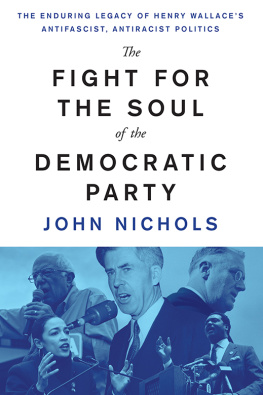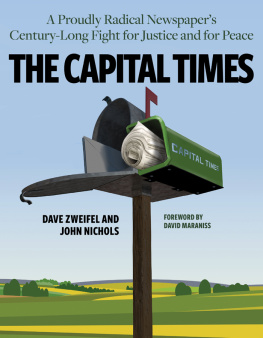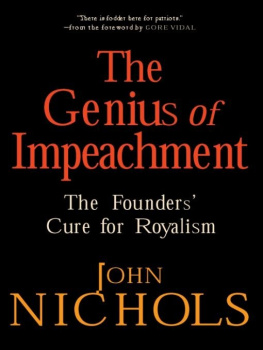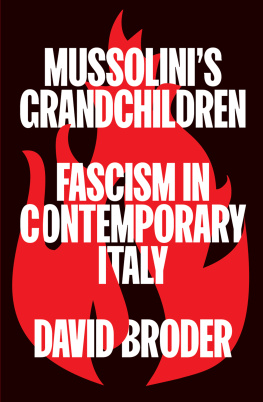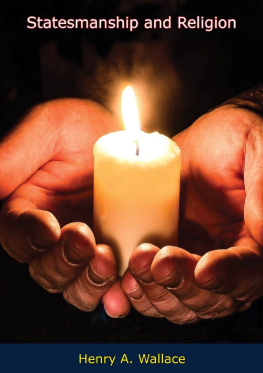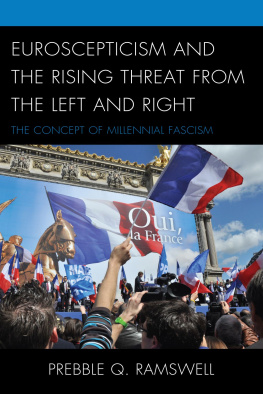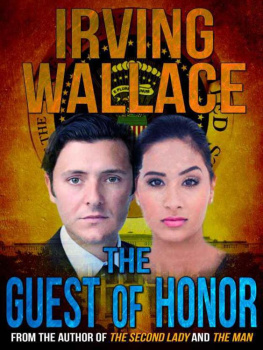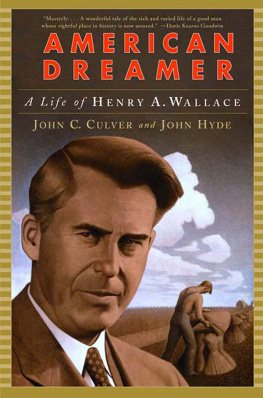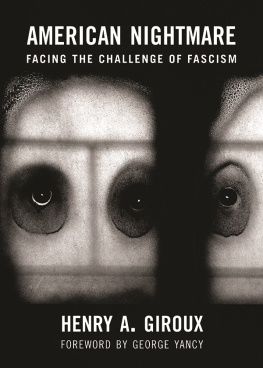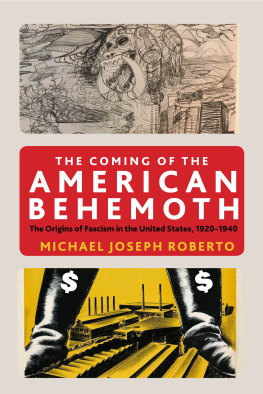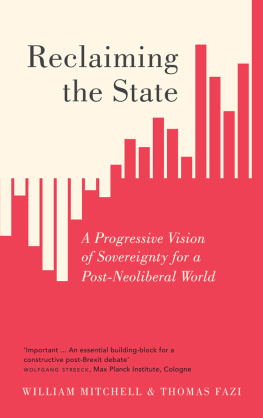Contents

The Fight for the Soul
of the Democratic Party
The Fight for the Soul
of the Democratic Party
The Enduring Legacy of
Henry Wallaces Antifascist,
Antiracist Politics
John Nichols

First published by Verso 2020
John Nichols 2020
All rights reserved
The moral rights of the author have been asserted
1 3 5 7 9 10 8 6 4 2
Verso
UK: 6 Meard Street, London W1F 0EG
US: 20 Jay Street, Suite 1010, Brooklyn, NY 11201
versobooks.com
Verso is the imprint of New Left Books
ISBN-13: 978-1-78873-740-1
ISBN-13: 978-1-78873-741-8 (UK EBK)
ISBN-13: 978-1-78873-742-5 (US EBK)
British Library Cataloguing in Publication Data
A catalogue record for this book is available from the British Library
Library of Congress Cataloging-in-Publication Data
A catalog record for this book is available from the Library of Congress
Library of Congress Control Number: 2019957421
Typeset in Sabon by MJ & N Gavan, Truro, Cornwall
Printed and bound by CPI Group (UK) Ltd, Croydon CR0 4YY
For my mother, Mary K. Nichols, the truest
progressive I know, and for David Panofsky,
who told me about his uncle Erwin
Contents
Why We Concern Ourselves with
the History of Political Parties
Americas future is linked to how we understand our past. For this reason, writing about history, for me, is never a neutral act.
Howard Zinn
Political parties have histories. In many countries, these histories are told with reverence and respect for their roles in breaking the bonds of colonialism or battling fascism, in defining the character of a country or in opposing malignant tendencies. Not so in the United States. The histories of our major political parties are rarely told. Rather, parties are understood as mere shells into which great men and women climb when they need a place on the ballot or a separate fund-raising apparatus. Dixiecrat segregationists decamp from the Democratic ballot line to the Republican line, transforming both parties. The youngest of Franklin Roosevelts New Deal Democrats lived long enough to watch in horror as the rules they had established to protect Americans from Wall Street speculation were undone by Bill Clinton and his New Democrats.
The path I took in writing this book began with a consideration of how the Republican Party of Abraham Lincoln and the Radical Reconstructionists of the 1860s became the party of Donald Trump and the xenophobic white nationalists of the 2010s. I wondered how it had changed so drastically that it made a lie of Dwight Eisenhowers 1954 observation that should any political party attempt to abolish social security, unemployment insurance, and eliminate labor laws and farm programs, you would not hear of that party again in our political history.
There are no more Eisenhowers in the Republican Party, and that explains a lot. The supposed adults in the room, the Paul Ryans and the Mitch McConnells, undoubtedly recognized the absurdity and awfulness of the Tea Party agenda of 2011, yet they adopted it largely without question. They thought they could control the right-wing base of their party. Instead, they forged a party that was ripe for takeover by Trump, a charlatan who wore his bigotry on his sleeve. If the Republican Party bartered off most of what was noble in its history long before Trump began to seriously consider a presidential bid, the hustler who wrote The Art of the Deal merely closed the deal.
But what of the Democratic Party? In the 2010s, the Democrats were as inept and visionless as the Republicans were calculating and cruel. When Trump assumed the presidency after a 2016 election that the Democrats should have won by a landslide, bolstered by a Republican Congress that was ready to follow the lead of a desperate and damaged narcissist, the crisis came into focus. It was not the Republican Party that was ruining our politics. Rather, the lack of a coherent and appealing opposition to the Republicans was the problem.
So what were the roots of that crisis? It is too shallow to blame Hillary Clinton or the bumbling strategists that mounted her 2016 campaign. It is too easy to point an accusatory finger at the consultants and candidates who kept losing to the empty suits that Mitch McConnell was running for the Senate. Something much deeper was amiss. The Democratic Party had abandoned what was visionary in its past to become the managerial party of Bill Clinton and the surrender caucus that showed up whenever the party was in a position to prevail. For some, it was sufficient to see President Clinton and the New Democrats as the source of the disease. But that was also shallow. The Democratic Party began pulling its punches long before both Clintons arrived on the scene.
The more I traced the roots of the decay of a party that could not beat Nixon or Reagan or George H.W. Bush or George W. Bush or Donald Trump, the closer I got to the last days of Franklin Roosevelts presidencyand to the great unraveling that began when Harry Truman was maneuvered onto the 1944 Democratic ticket by the party bosses and Southern segregationists who knew FDR was dying and wanted to bury the New Deal with him. Truman, who was willing to compromise with the bosses, established a pattern of ideological and strategic concession by the party that extends to this day. But Truman did not just grab the nomination, the vice presidency and the promise of the presidency in a vacuum. He came to power after a struggle. The more I focused on that definitional fight, the clearer it became that the lost soul of the Democratic Party was a man. And his name was Henry Wallace.
Wallace has been so thoroughly written out of our popular history that he is often confused with a politician who was his polar opposite, Alabama segregationist George Wallace. Even those who know bits and pieces of the good Wallaces story imagine him as a tragic figure who, after a brief moment of New Deal glory, was ruined by the excesses of his idealism. Wallace was an idealist; arguably, with Eleanor Roosevelt, Wendell Willkie and A. Philip Randolph, one of the greatest idealists among the cadre of dreamers who remade America in the late 1930s and early 1940s. Indeed, the bare-bones biography of Henry Wallace is sufficient to identify him as one of the most striking political figures in U.S. history.
A progressive Republican editor and farmer from Iowa who supported Roosevelt in the 1932 campaign that realigned American politics, Wallace became an original member of FDRs cabinet and turned the Department of Agriculture into the roaring engine of the New Deal. He so impressed the president that, in 1940, Roosevelt forced the Democratic Party to accept Wallace as his running mate in an audacious bid for a third term. After an overwhelming election victory on the eve of World War II, Wallace emerged as the liberal conscience of the administration, championing the fight against fascism abroad and racism at home. He was controversial and so uncompromising that the bosses took advantage of an ailing and distracted Franklin Roosevelt to force him off the ticket in 1944, making way for the more malleable Truman. Yet FDR kept him close, making Wallace his secretary of commerce for a fourth term in which the original New Dealers dreamed of advancing the radical vision of Four Freedoms abroad and an Economic Bill of Rights at home.

